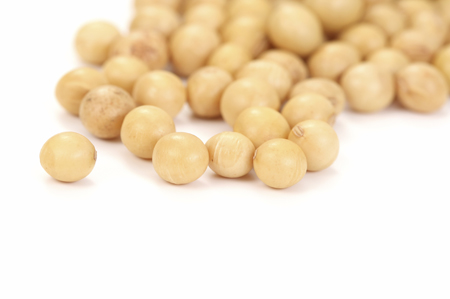Beans Jump, Grains Higher Overnight; Soybeans Unlikely To Hold Gains in 18-19 On Output Projections
 (Agriculture.com) – SOYBEANS JUMP, GRAINS HIGHER OVERNIGHT ON CONTINUED DROUGHT CONCERNS
(Agriculture.com) – SOYBEANS JUMP, GRAINS HIGHER OVERNIGHT ON CONTINUED DROUGHT CONCERNS
Soybeans jumped to an 11-month high, and grains gained overnight on continuing concerns about drought in global growing areas.
Rain was expected in Argentina in the past three days, but only a small amount fell, leaving most soybean and corn areas in the country dry, forecasters said. The dry weather will lead to further stress on crops that have already suffered much of the year from drought.
Money managers turned bullish on soybeans for the first time since mid-December, according to the Commodity Futures Trading Commission. Investors were net long by 36,866 soybean contracts last week, government data show.
For wheat, the dry weather in the Southern Plains also continues, leaving the hard red winter wheat crop in peril. The region has received little or no rainfall in at least the past 90 days, according to the National Weather Service.
Soybean futures for March delivery jumped 15¢ to $10.36½ a bushel overnight on the Chicago Board of Trade. Soymeal added $9.40 to $385.40 a short ton, and soy oil gained 0.05¢ to 31.78¢ a pound.
Corn futures for March delivery rose 1¾¢ to $3.69¼ a bushel in Chicago.
Wheat added 3¾¢ to $4.61½ a bushel, while Kansas City futures gained 4¼¢ to $4.82 a bushel overnight.
SOYBEAN PRICES UNLIKELY TO HOLD GAINS IN 2018-2019 IF PRODUCTION, CONSUMPTION ESTIMATES HOLD
It’s unlikely that soybean prices will be able to maintain their current upward pace barring some sort of production collapse or consumption increase, said Todd Hubbs, a professor in the Department of Agricultural and Consumer Economics at the University of Illinois.
Prices have risen in recent weeks to the highest since March of last year due to ongoing drought concerns in Argentina and increases in soymeal prices, he said.
That, in turn, indicates that crush rates will top USDA projections for the year as it creates increased crush profitability, Hubbs said in a report.
Using trend line yield and normal weather expectations, the 2018 crop would come in about 48.5 bushels an acre, which at current planting expectations would leave a crop of about 4.398 billion bushels, he said.
Stockpiles are forecast at 530 million bushels, and imports are seen at 25 million, leaving a total supply of 4.954 billion bushels, up by 236 million bushels from the current marketing year. To prevent inventories from rising, consumption would have to total 4.424 billion bushels, which is an increase of 176 million bushels from current projections, Hubbs said.
That would require a “significant expansion in soybean exports” and improved strength in crush levels, while a larger planted acreage or higher yield would “greatly” expand stockpiles.
Using the current expectations for production and consumption, the average farm price in the 2018-2019 marketing year that starts on September 1 may fall in the $9 to $9.20 range, he said.
“Expectations for the next marketing year include increased soybean acreage, an increase in ending stocks, and lower prices when compared with the current prices witnessed in the market,” Hubbs said in the report. “The mitigation of a major price decline requires a substantial increase in consumption or lower production in 2018. Neither alternative seems likely at this point.”
CENTRAL U.S. FACING WINTER WEATHER AS LARGE STORM CONTINUES TO DUMP ICE, RAIN
Much of the central U.S. is getting blasted by a storm that blew in from the west over the long weekend leaving several inches of snow and dangerous ice in its wake.
An ice storm warning is in effect for several counties surrounding Kansas City, according to the National Weather Service. Icy conditions were reported in eastern Nebraska and western Iowa yesterday, making travel hazardous.
In the Kansas City metro area this morning, up to .2″ of ice has formed on streets after freezing rain overnight. Temperatures will eventually rise above freezing, but chances of precipitation will increase as the day goes on, leading to slick roads, the NWS said in a report early Tuesday morning.
Drivers are advised to take “extreme caution” if traveling.
Farther north, a winter weather advisory is in effect for much of Iowa, Wisconsin, and Minnesota. Freezing rain is the main culprit today, as additional ice accumulations, in addition to what’s already on the roads, are expected, the NWS said.




